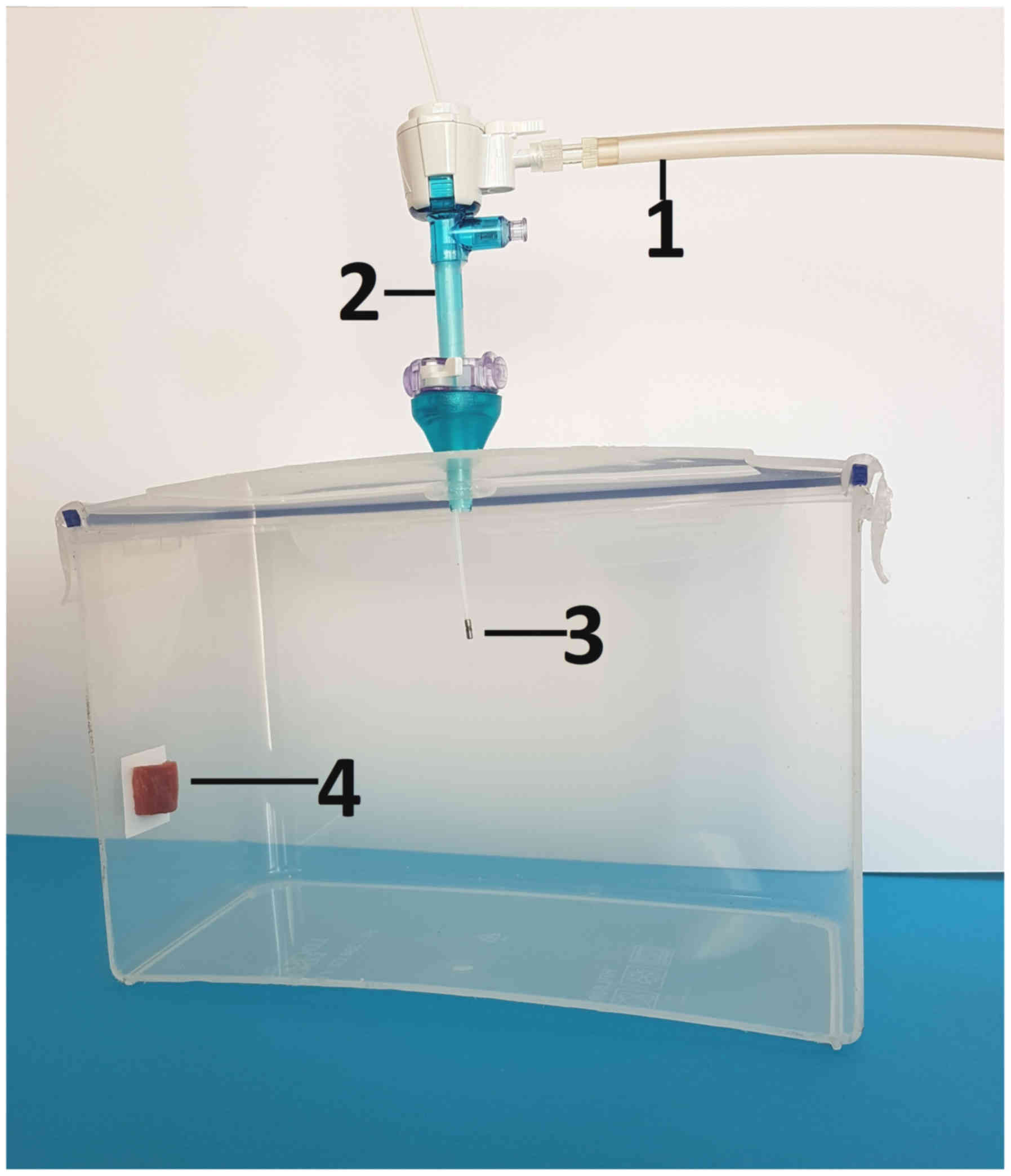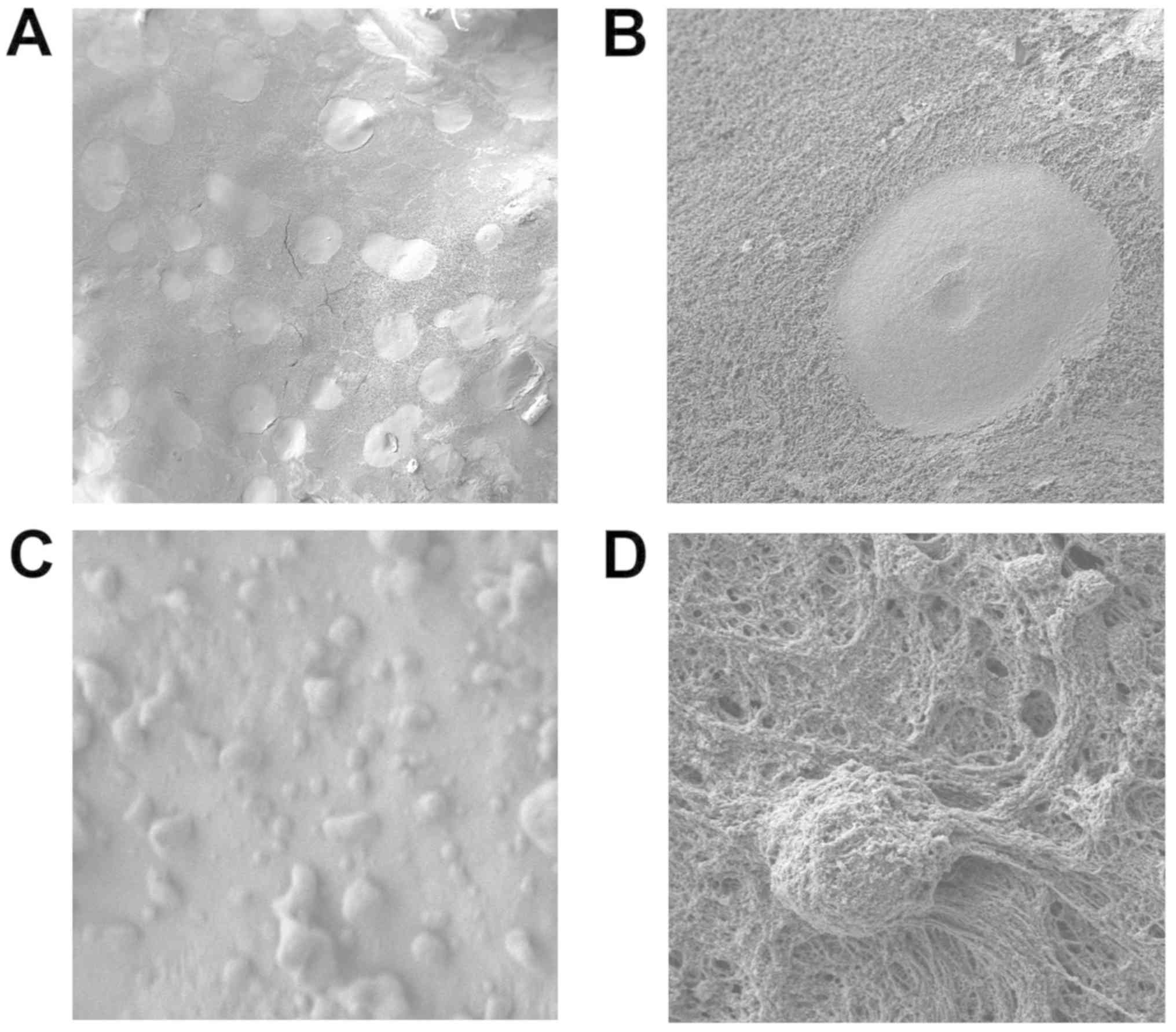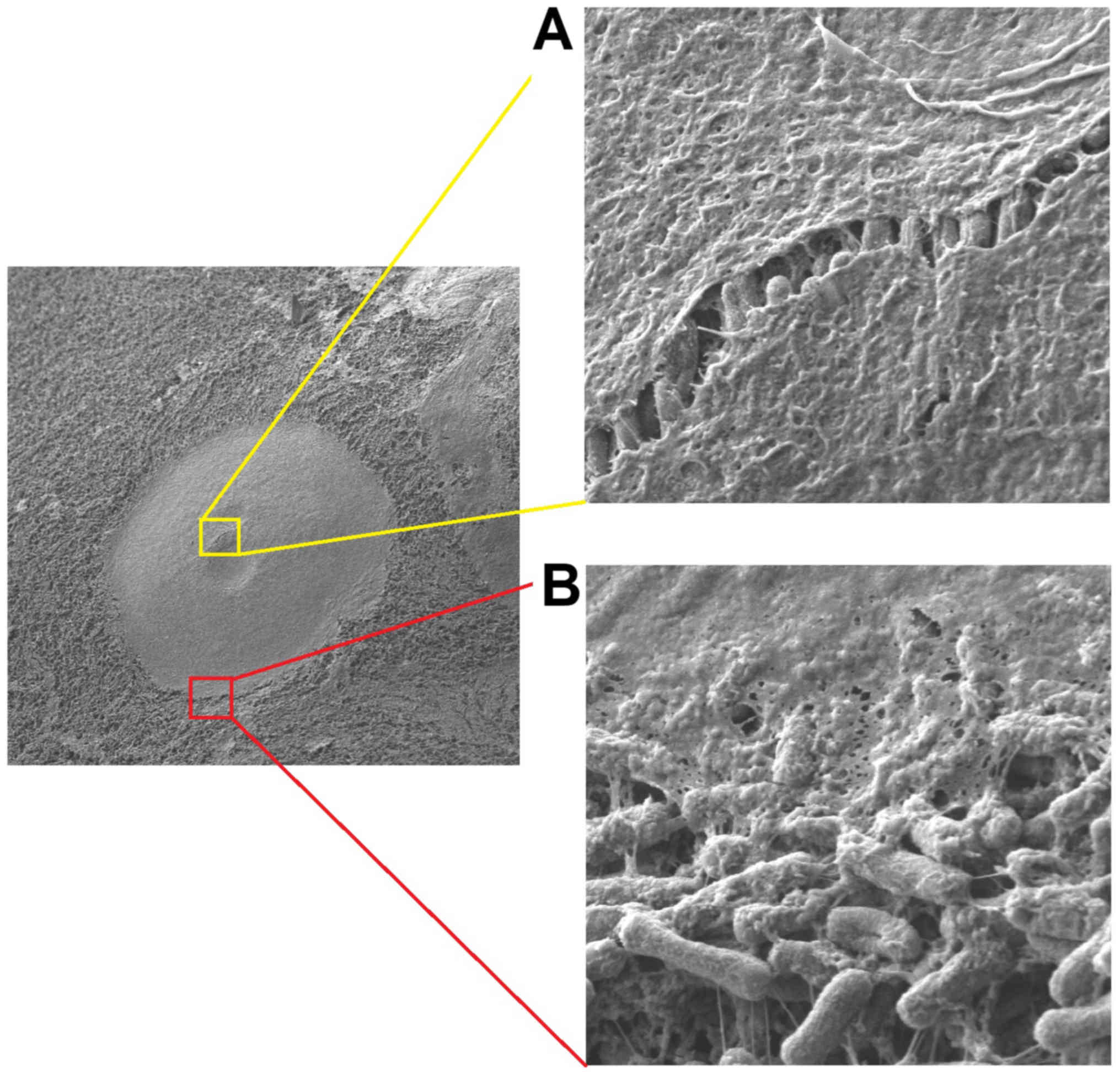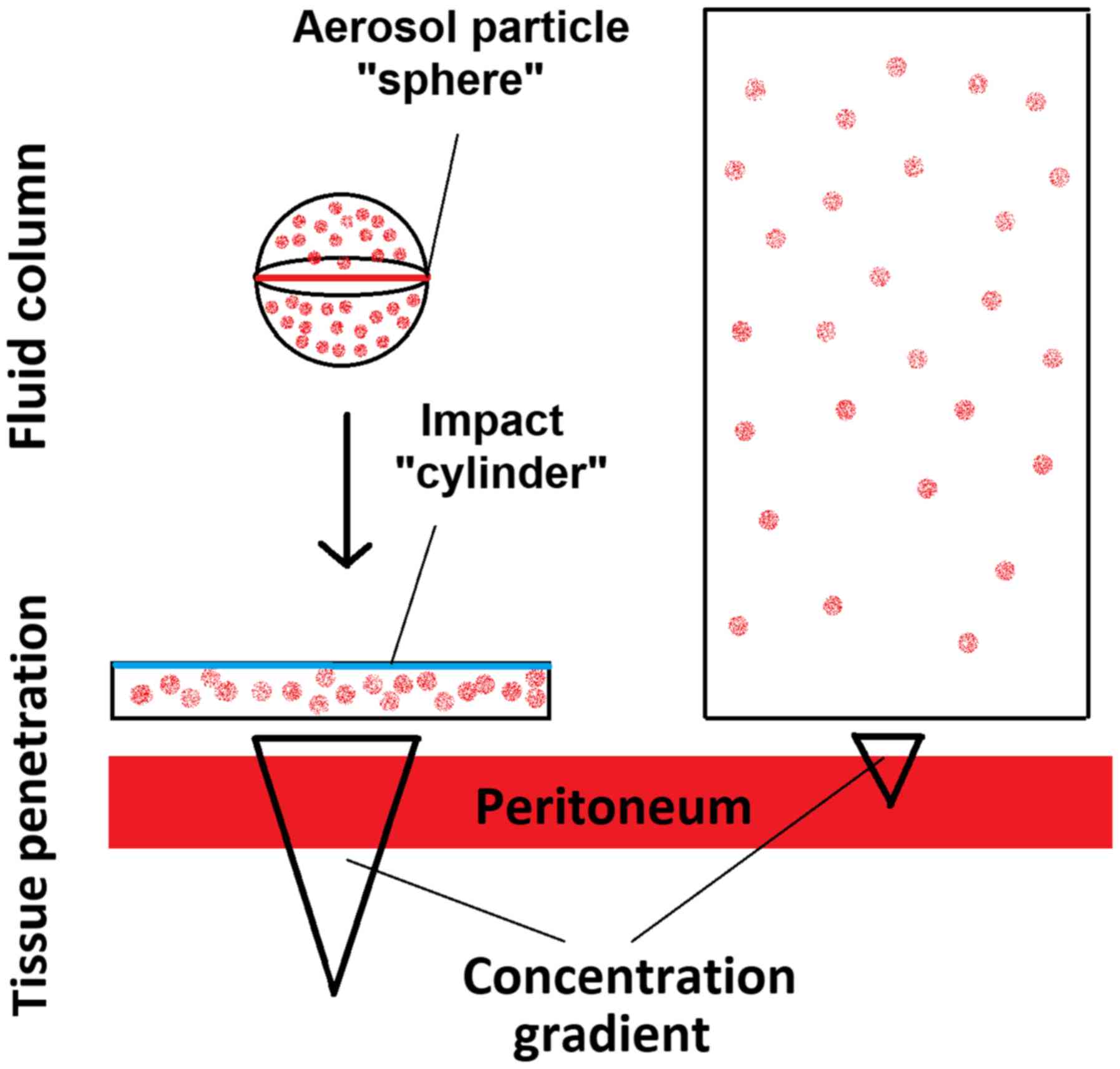|
1
|
Solaß W, Hetzel A, Nadiradze G, Sagynaliev
E and Reymond MA: Description of a novel approach for
intraperitoneal drug delivery and the related device. Surg Endosc.
26:1849–1855. 2012. View Article : Google Scholar : PubMed/NCBI
|
|
2
|
Odendahl K, Solass W, Demtröder C,
Giger-Pabst U, Zieren J, Tempfer C and Reymond MA: Quality of life
of patients with end-stage peritoneal metastasis treated with
Pressurized IntraPeritoneal Aerosol Chemotherapy (PIPAC). Eur J
Surg Oncol. 41:1379–1385. 2015. View Article : Google Scholar : PubMed/NCBI
|
|
3
|
Khosrawipour T, Khosrawipour V and
Giger-Pabst U: Pressurized Intra Peritoneal Aerosol Chemotherapy in
patients suffering from peritoneal carcinomatosis of pancreatic
adenocarcinoma. PLoS One. 12:e01867092017. View Article : Google Scholar : PubMed/NCBI
|
|
4
|
Khosrawipour V, Khosrawipour T,
Diaz-Carballo D, Förster E, Zieren J and Giger-Pabst U: Exploring
the spatial drug distribution pattern of pressurized
intraperitoneal aerosol chemotherapy (PIPAC). Ann Surg Oncol.
23:1220–1224. 2016. View Article : Google Scholar : PubMed/NCBI
|
|
5
|
Khosrawipour V, Khosrawipour T,
Falkenstein TA, Diaz-Carballo D, Förster E, Osma A, Adamietz IA,
Zieren J and Fakhrian K: Evaluating the effect of micropump©
position, internal pressure and doxorubicin dosage on efficacy of
pressurized intra-peritoneal aerosol chemotherapy (PIPAC) in an ex
vivo model. Anticancer Res. 36:4595–4600. 2016. View Article : Google Scholar : PubMed/NCBI
|
|
6
|
Khosrawipour V, Giger-Pabst U,
Khosrawipour T, Pour YH, Diaz-Carballo D, Förster E, Böse-Ribeiro
H, Adamietz IA, Zieren J and Fakhrian K: Effect of irradiation on
tissue penetration depth of doxorubicin after pressurized
intra-peritoneal aerosol chemotherapy (PIPAC) in a novel ex-vivo
model. J Cancer. 7:910–914. 2016. View Article : Google Scholar : PubMed/NCBI
|
|
7
|
Khosrawipour V, Diaz-Carballo D, Acikelli
AH, Khosrawipour T, Falkenstein TA, Wu D, Zieren J and Giger-Pabst
U: Erratum to: Cytotoxic effect of different treatment parameters
in pressurized intraperitoneal aerosol chemotherapy (PIPAC) on the
in vitro proliferation of human colonic cancer cells. World J Surg
Oncol. 15:942017. View Article : Google Scholar : PubMed/NCBI
|
|
8
|
Khosrawipour V, Mikolajczyk A, Schubert J
and Khosrawipour T: Pressurized intra-peritoneal aerosol
chemotherapy (PIPAC) via endoscopical microcatheter system.
Anticancer Res. 38:3447–3452. 2018. View Article : Google Scholar : PubMed/NCBI
|
|
9
|
Khosrawipour V, Khosrawipour T,
Hedayat-Pour Y, Diaz-Carballo D, Bellendorf A, Böse-Riberio H,
Mücke R, Mohanaraja N, Adamietz IA and Fakhrian K: Effect of
whole-abdominal irradiation on penetration depth of doxorubicin in
normal tissue after Pressurized Intraperitoneal Aerosol
Chemotherapy (PIPAC) in a post-mortem swine model. Anticancer Res.
37:1677–1680. 2017. View Article : Google Scholar : PubMed/NCBI
|
|
10
|
Khosrawipour V, Bellendorf A, Khosrawipour
C, Hedayat-Pour Y, Diaz-Carballo D, Förster E, Mücke R, Kabakci B,
Adamietz IA and Fakhrian K: Irradiation does not increase the
penetration depth of doxorubicin in normal tissue after Pressurized
Intra-peritoneal Aerosol Chemotherapy (PIPAC) in an ex vivo model.
In Vivo. 30:593–597. 2016.PubMed/NCBI
|
|
11
|
Mikolajczyk A, Khosrawipour V, Schubert J,
Chaudhry H, Pigazzi A and Khosrawipour T: Particle stability during
Pressurized Intra-Peritoneal Aerosol Chemotherapy (PIPAC).
Anticancer Res. 38:4645–4649. 2018. View Article : Google Scholar : PubMed/NCBI
|
|
12
|
DeCarlo PF, Slowik JG, Worsnop DR,
Davidovits P and Jimenez JL: Particle morphology and density
characterization by combined mobility and aerodynamic diameter
Measurements. Part 1: Theory. Aerosol Sci Technol. 38:1185–1205.
2004. View Article : Google Scholar
|
|
13
|
Nowacki M, Grzanka D and Zegarski W:
Pressurized intraperitoneal aerosol chemotheprapy after
misdiagnosed gastric cancer: Case report and review of the
literature. World J Gastroenterol. 24:2130–2136. 2018. View Article : Google Scholar : PubMed/NCBI
|
|
14
|
Nowacki M and Zegarski W: The scientific
report from the first pressurized intraperitoneal aerosol
chemotherapy (PIPAC) procedures performed in the eastern part of
Central Europe. J Int Med Res. 46:3748–3758. 2018. View Article : Google Scholar : PubMed/NCBI
|
|
15
|
Göhler D, Khosrawipour V, Khosrawipour T,
Diaz-Carballo D, Falkenstein TA, Zieren J, Stintz M and Giger-Pabst
U: Technical description of the microinjection pump
(MIP®) and granulometric characterization of the aerosol
applied for pressurized intraperitoneal aerosol chemotherapy
(PIPAC). Surg Endosc. 31:1778–1784. 2017. View Article : Google Scholar : PubMed/NCBI
|
|
16
|
Khosrawipour T, Wu D, Bellendorf A,
Mohanaraja N, Karabay E, Diaz-Carballo D and Khosrawipour V:
Feasibility of single tumorspot treatment in peritoneal
carcinomatosis via close range doxorubicin impaction in pressurized
intra-peritoneal aerosol chemotherapy (PIPAC). J Clin Exp Oncol.
6:2017. View Article : Google Scholar
|
|
17
|
Kakchekeeva T, Demtröder C, Herath NI,
Griffiths D, Torkington J, Solaß W, Dutreix M and Reymond MA: In
vivo feasibility of electrostatic precipitation as an adjunct to
pressurized intraperitoneal aerosol chemotherapy (ePIPAC). Ann Surg
Oncol. 23 (Suppl 5):S592–S598. 2016. View Article : Google Scholar
|
|
18
|
Göhler D, Große S, Bellendorf A,
Falkenstein TA, Ouaissi M, Zieren J, Stintz M and Giger-Pabst U:
Hyperthermic intracavitary nanoaerosol therapy (HINAT) as an
improved approach for pressurised intraperitoneal aerosol
chemotherapy (PIPAC): Technical description, experimental
validation and first proof of concept. Beilstein J Nanotechnol.
8:2729–2740. 2017. View Article : Google Scholar : PubMed/NCBI
|
|
19
|
Elias DM and Sideris L: Pharmacokinetics
of heated intraoperative intraperitoneal oxaliplatin after complete
resection of peritoneal carcinomatosis. Surg Oncol Clin N Am.
12755–769. (xiv)2003. View Article : Google Scholar : PubMed/NCBI
|
|
20
|
Tempfer CB, Giger-Pabst U, Seebacher V,
Petersen M, Dogan A and Rezniczek GA: A phase I, single-arm,
open-label, dose escalation study of intraperitoneal cisplatin and
doxorubicin in patients with recurrent ovarian cancer and
peritoneal carcinomatosis. Gynecol Oncol. 150:23–30. 2018.
View Article : Google Scholar : PubMed/NCBI
|



















